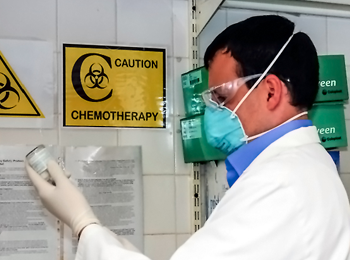Know your risk for ovarian cancer
While ovarian cancer is considered to be a relatively rare disease, it is also the most lethal gynecologic cancer, causing more deaths than any other cancer of the female reproductive system. What makes this cancer so deadly?

“Ovarian cancer includes all cancers that start in the ovary, fallopian tube, or the lining of the inside of the abdomen,” said Dr. Claire Hoppenot, a gynecologic oncologist with Baylor College of Medicine. “Because of where the ovaries are, cancer spreads very quickly – and the cancer is often found after it has already spread inside of the abdomen.”
Unlike other gynecologic cancers, ovarian cancer is difficult to detect – there is no screening currently, and 70% of ovarian cancers are diagnosed in advanced stages.
The role of genetics
Are some women genetically predisposed to ovarian cancer?
“There are genetic mutations that contribute to a higher risk of ovarian cancer, such as the BRCA gene, which is also associated with breast cancer. Having a family history of ovarian cancer can also increase risk.”
Women with the BRCA mutation have a 30% chance of developing ovarian cancer during their lifetime. “In this case, removing the ovaries might be recommended to decrease the chance to almost zero after childbearing.”
For women who have a strong history of breast and ovarian cancers in their family, Hoppenot recommends genetic testing for mutations that would increase their risk.
What are the symptoms?
Common signs of ovarian cancer include bloating, constipation, diarrhea, feeling full despite not eating much, pelvic pressure, and discomfort – all of which come and go for most women.
“However, if you experience these symptoms for several weeks and they aren’t going away, you should talk with your physician,” Hoppenot said. “Often, women are diagnosed after getting a CT scan for another reason – then a cancerous growth is discovered on the ovary.”

Treatment options and outlook
For the majority of women with ovarian cancer, treatment involves a combination of surgery and chemotherapy. The order will differ depending on the severity of the diagnosis.
“If it’s possible to remove all the cancer, we’ll start with surgery and use chemotherapy to remove microscopic cancer cells. Alternatively, we will shrink the tumor first with chemotherapy, surgically remove the remaining cancer, and do more chemotherapy afterwards.”
There are emerging treatments, including PARP inhibitors, which target the BRCA mutation cell cycle. “It works particularly well for patients with the BRCA mutation, and it is also given as a medication after the treatment to prevent cancer from returning.”
HIPEC, or hyperthermic intraperitoneal chemotherapy, is also being looked at as an option to treat ovarian cancer. It is a needle-based chemotherapy that is done at the time of surgery.
Many women have a recurrence of ovarian cancer, and about 10-15% of women survive 10 years after diagnosis. “This is much too low and we are working on getting the percentage higher,” Hoppenot said.
“The difficult thing about ovarian cancer is that it can be disheartening to know something has been going on and you may not have realized it. I emphasize to patients that it isn’t uncommon – ultimately, we are working to discover new ways to find and treat it at an earlier stage.”
Dr. Hoppenot is an assistant professor of obstetrics and gynecology and member of the Dan L Duncan Comprehensive Cancer Center at Baylor. Learn more about gynecologic oncology services or call (713) 798-1999.
-By Nicole Blanton



